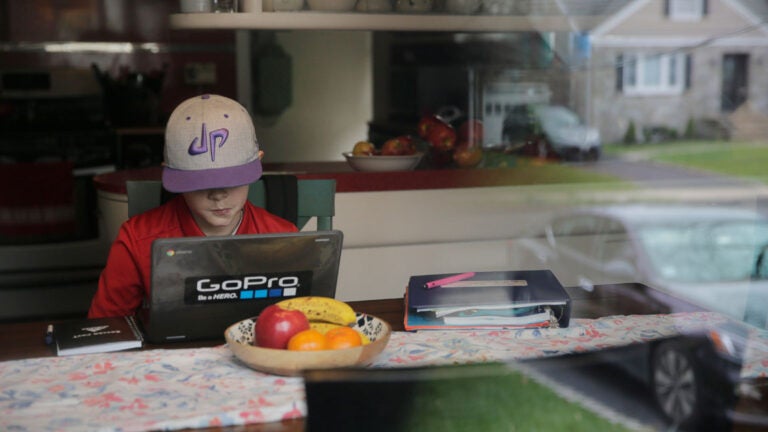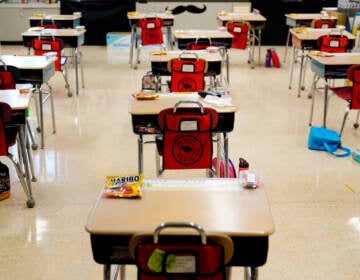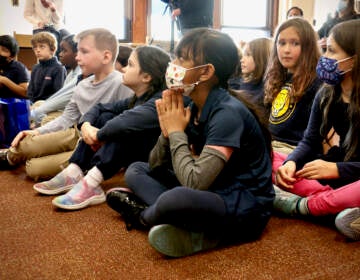Gauging the toll remote instruction has taken on N.J. students
There’s little disagreement that the state needs to determine how much "learning loss" has occurred. The argument is over the best way to collect data.

A young student attends virtual school from his home. (AP Photo/Seth Wenig)
This story originally appeared on NJ Spotlight.
___
In the throes of the COVID-19 pandemic and with more New Jersey schools being forced to go to remote instruction, worries about so-called learning loss among students have become commonplace.
Most agree it’s a concern: Will students suffer academically — and irreparably — during this extraordinary year?
But how to define that loss and, just as importantly, how to address whatever damage is done are proving far harder to agree upon.
That was evident Monday in a lively hearing of the state Senate Education Committee, where lawmakers heard testimony on a bill requiring the state to determine and examine what damage the pandemic has inflicted on student learning.
Few at the online hearing disagreed with the good intentions, but what was a bit unexpected was how the proposal met resistance from some expected allies about how to attain that goal.
State Sen. Teresa Ruiz (D-Essex), the influential chair of the committee, has pressed for the accounting and has called for the state Department of Education to complete a report that determines the level of potential loss in the past eight months. Her bill would require the department to report back to the Legislature within the next 30 days.
Ruiz said it shouldn’t even require legislation.
“The (state Department of Education) should be doing this on their own accord,” she said. “But when the administration is not doing this, the Legislature needs to step in.”
But while in accord about the end, the state’s main education groups representing teachers, administrators and school boards were far less in agreement about the means and the bill’s short timeline.
One after another, representatives of the various groups raised concerns about how student performance — or the lack of performance — would be measured in the middle of a pandemic when even basic school operations have become a test.
“We need to balance this with the current reality on our schools,” said Debra Bradley, lobbyist for the New Jersey Principals and Supervisors Association. “Our members tell us the top concerns right now is keeping our students safe.”
A representative of New Jersey Education Association, the state’s dominant teachers union, said it supported the idea but also didn’t want “students and staff burdened” with additional tasks and assessments.
“We also worry about the term ‘learning loss,’ because it sounds like kids learned something and then lost it,” said Francine Pfeffer, an NJEA lobbyist. “Unfinished learning or learning delay is a much better term for this.”
But that touched a nerve with Ruiz, who has been most critical of the Murphy administration in addressing gaps in education during the pandemic. That includes technology access; 30,000-plus students are still without tools and internet access.
“Learning loss is extraordinarily real thing, and I will not move away from that,” she responded to Pfeffer. “It does happen and it has happened.”
Ruiz pressed on, saying the data on student performance is critical right now in gauging the impact of the pandemic, She noted that while other state departments have been collecting information, the education department has provided little.
“This should have started months ago,” Ruiz said.
“We need to have that data, and as we know there will be only certain amount of money, how do we have a blueprint to bring every child up to speed?” she said.
“Let’s have a reckoning with truth so it helps policy for every child,” Ruiz said. “Not about punishment or withholding funds, but programs like summer extension. How do you have that discussion without collecting data.”
WHYY is your source for fact-based, in-depth journalism and information. As a nonprofit organization, we rely on financial support from readers like you. Please give today.




![CoronavirusPandemic_1024x512[1]](https://whyy.org/wp-content/uploads/2020/03/CoronavirusPandemic_1024x5121-300x150.jpg)


